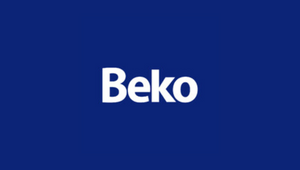
Behind Microsoft’s Bespoke Technology That Allowed Veterans to Participate in This Year’s Invictus Games

Microsoft has collaborated with the Invictus Games Foundation and McCann to use the power of technology provide a new way for Wounded, Injured and Sick (WIS) service personnel and veterans to take part in the Invictus Games, through playing music.
The team invited a group of WIS personnel and veterans to create an anthem for the Invictus Games The Hague 2022, as they are unable to participate through playing sports. Using bespoke technology, the WIS personnel were enabled to play instruments that are otherwise inaccessible to them, which helped them create the ‘Anthem For All’ - a truly inclusive anthem for the Invictus Games, played at every medals ceremony at this year’s Games in The Hague, Netherlands, between 16th and 22nd of April.
Microsoft’s Hands-Free Technology Lab in San Francisco is the culprit behind the incredible tech involved in the project, where the teams created bespoke solutions to suit the varied abilities of the participants - using controllers and Gaze eye tracking technology. The eye tracking technology uses eye movement to control the instrument, for those that have limited hand mobility.
The incredible collaborative work between the teams and the Invictus Games Foundation, with the help of the latest advancements in technology, allowed for a truly inclusive experience for everybody involved.
LBB’s Zoe Antonov spoke to executive creative directors Jamie Mietz and Sanjiv Mistry, and creative directors Richard Holmes and Zac Ellis to understand more about the technology behind the anthem and the importance of inclusivity in this year’s Invictus Games and beyond.
LBB> What was the brief for this campaign, and what were the conversations around it?
Jamie and Sanjiv> Microsoft’s purpose is to empower every person on the planet to achieve more. Our brief was to create a meaningful technology-based intervention that would act as a lightning rod for people to discover all the many ways in which the Microsoft brand is empowering individuals, communities and organisations across the world.
LBB> What was it like working with the Invictus Games Foundation and how did that partnership come into fruition?
Jamie and Sanjiv> Through a collaboration with McCann London, Momentum and MRM, we wanted to find a strategic partner for Microsoft to support our goal in re-positioning who Microsoft’s technology could help and with whom we could create lasting impact and empower people to achieve more through the brand.
The partnership with the Invictus Games Foundation came about as a result of shared values. Just as Microsoft empowers people to do more than they thought possible, the Invictus Games gives WIS service personnel the opportunity to shine on an international stage with pride and dignity. With shared values of accessibility, inclusion, empowerment, authenticity and innovation, this was a great opportunity for a strategic partnership between Microsoft and the Invictus Games Foundation (IGF) to collaborate and unleash the power of technology to support, enable and empower WIS service people.
The Invictus Games Foundation is a small and inspiring team who were hugely collaborative and supportive throughout the process.
LBB> Tell us more about the development of the technology used to create the anthem and how does it work?
Richard> McCann London and the production team at Momentum worked in collaboration with Microsoft’s Hands Free Lab in Redmond, US. Once we’d recruited the veterans, the team adapted existing technology that enabled injured military personnel and veterans to play instruments they would otherwise be unable to play, to create the first truly inclusive anthem of the Games.
The tech team re-programmed Xbox Adaptive Controllers with Touch Control and Logotech Switches to trigger solenoid strikers against instruments, access mini-inputs and sound libraries allowing the participants to create musical notes. Eye tracking via the Tobi Eye Tracker and Eye Gaze technology linked to musical notes allowed for instruments (such as the tubular bells) to be played by the flick of an eye.
The adapted technology was then workshopped and finetuned with the injured veterans under the guidance of musical director Davy Williamson.
LBB> What was it like working with the service personnel and how did you go about telling their stories in such a respectful and meaningful way?
Zac> It was both eye-opening and deeply inspiring to work with the service personnel who created the anthem, in particular the ‘leads’ Karl and Emma. Throughout the entire process, from recruitment through to the anthem creation, they were nothing but open and honest about their lives both before and after being injured.
Knowing what made them the people they are today, and with a desire to restore musical ability that injury took away, it was very important for us to be true to their authentic stories and not have the brand shy away from some of the unsettling aspects of their injuries.
LBB> Do you believe campaigns like this one will help creative media take more confident steps towards inclusivity and if so, how?
Sanjiv> We need to move away from a world of unconscious bias to one of conscious inclusion. Within every aspect of society, even ones taken for granted for so long, there is room for it to be viewed through an inclusivity lens. That was the approach we took with Anthem for All. With the Games itself being truly inclusive, it was only fitting that the Games has an anthem for injured military personnel, made by injured military personnel – an anthem that lives and breathes this philosophy.
LBB> How did the creation of the anthem itself go? What was its production process?
Zac Ellis> The process began with a recruitment campaign via the IGF searching for injured veterans with a musical history.
Once we had our candidates and understood their abilities, we began working with Microsoft’s Hands-Free technology team in Redmond to develop the solutions that would enable each participant to play the instrument they wanted. The R&D process lasted nine months.
In the lead up to the recording the veterans attended workshops where the technology was finessed and they each began to learn how to play their instrument.
The recording took place at the world-famous Metropolis Studios in London over two days.
Due to their injuries, most of the veterans could only play short sections of the track at a time, but gradually, bit by bit, the whole anthem was stitched together.
Corporal Karl Hinett was invited by the Invictus Games Foundation to represent the group and travel to the Games and present the new anthem and the project to Invictus Games Foundation Patron Prince Harry, The Duke Of Sussex.
The anthem was played at every medal ceremony during the games, broadcast live across the world and heard by millions of people.
Our plan is to continue to expand this further so that the track can start to pay back and will continue to inspire. We have big ambitions. Picture a performance somewhere like the Royal Albert Hall!
LBB> How long did this campaign take from beginning to end?
Richard and Zac> The campaign was over 2.5 years in the making, with a number of starts and stops due to covid and the cancellation of the Games (which were meant to originally take place in 2020!).
From when the project was officially underway the entire tech development process took approximately 9 months.















